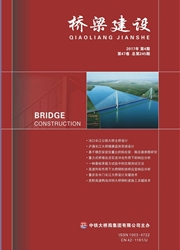

 中文摘要:
中文摘要:
以便学习与弹簧卷磨擦的一个隔离系统,计算机程序被编译基于它的运动特征评估地震性能。通过程序,各种各样的地震表演因素的影响,例如,滚动磨擦系数,春天常数,系统地被调查。结果证明由增加滚动磨擦系数,结构的相对排水量有效地由于地震负担减少,当结构的反应大小主要变化时取决于在下列因素之间的关联:春天常数,地震紧张,和滚动磨擦系数。而且,增加春天常数能减少然而,它增加的结构的相对排水量,以及剩余排水量结构的反应大小。基于受到情形地震的各种各样的地震表演因素的分析,最后优化了理论地震性能能被相当联合春天常数和滚动磨擦系数完成。
 英文摘要:
英文摘要:
In order to study an isolation system of rolling friction with springs, computer programs were compiled to evaluate the seismic performance based on its movement characteristics. Through the programs, the influences of various seismic performance factors, e.g., rolling friction coefficient, spring constant, were systematically investigated. Results show that by increasing the rolling friction coefficient, the structural relative displacement due to seismic load effectively decreases, while the structural response magnitude varies mainly depending on the correlations between the following factors: the spring constant, the earthquake intensity, and the rolling friction coefficient. Furthermore, increasing the spring constant can decrease the structural relative displacement, as well as residual displacement, however, it increases the structural response magnitude. Finally, based on the analyses of various seismic performance factors subjected to the scenario earthquakes, optimized theoretical seismic performance can be achieved by reasonably combining the spring constant and the rolling friction coefficient.
 同期刊论文项目
同期刊论文项目
 同项目期刊论文
同项目期刊论文
 期刊信息
期刊信息
